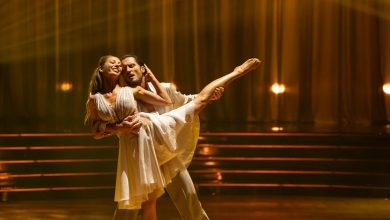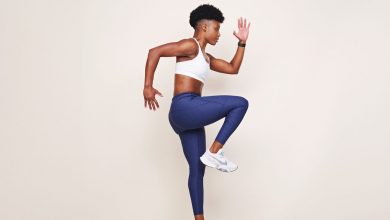Your Guide to the Most Supportive Running Shoes for Flat Feet

Running with flat feet can be painful—and we’re not just talking about post-workout muscle soreness. Having this foot shape makes you more likely to overpronate, meaning your arches may roll too far inward (toward the ground) when you take a step forward. That can cause a whole mess of problems. “Think of it like a corkscrew: If one part rotates, you’re going to have some sort of abnormal rotation going all the way up,” Pennsylvania-based podiatrist Alicia Canzanese, DPM, current president of the American Academy of Podiatric Sports Medicine, tells SELF. Your ankle might tilt in, then your shin could twist, followed by your knee and even your hips, she says, creating a cascade of issues that isn’t nearly as fun as opening up a bottle of wine.
This is where the best running shoes for flat feet come in—certain pairs can help prevent all that rotation. Just know that there are different degrees of flat feet, Dr. Canzanese says. You might have more of a mild, flexible flat foot, or you could have a rigid flat foot that severely overpronates. But no matter where you fall on the spectrum or what other foot issues you’re dealing with (bunions, anyone?), choosing the right sneakers can help you get in your miles far more comfortably.
How can I tell if I have flat feet?
You don’t need to be an expert to tell if your feet qualify as “flat.” “One of the best ways to figure out if you have flat feet is to perform ‘the wet test,’” New York-based foot and ankle surgeon Bruce Pinker, DPM, tells SELF. All you need to do is wet the bottoms of your feet, then walk across a surface that will clearly show your footprints (like a large piece of paper or two), he says. If you see big ovals, you’ve got flat feet. If the outlines of your feet are more like skinny question marks, you have high arches. And if they fall somewhere in the middle, you’ve got a normal foot type.
What to look for when shopping for running shoes for flat feet
Flat feet benefit from super structured shoes. “Look for running shoes with added medial arch support,” Dr. Pinker suggests. Dr. Canzanese says you’ll find this in any sneaker labeled a “stability shoe,” and ones called out as “motion-control” shoes will be the most supportive. If you have a more severe flat foot and even the sturdiest sneaks aren’t working for you, she suggests adding an orthotic insole. Just know that the more supportive a shoe is, the heavier and stiffer it will typically be, Dr. Canzanese warns, so look for pairs with just enough support to stabilize your foot that still feel comfy to run in.
Aside from arch support, running shoes for flat feet should also have a sturdy heel cup, a wide platform under the arch, and firmer material on the inside of the midsole (“some companies call this a ‘J-frame,’ some call it a ‘guide rail,’” Dr. Canzanese says). The best heel-to-toe drop (the difference in the height of the sole underneath the heel vs. the forefoot) and cushioning may vary—those come down to your personal preferences and running style.
Well-fitting sneakers aren’t hard to spot: “You know you’ve found a good fit if you find relief in your feet while wearing them,” Dr. Pinker says. Dr. Canzanese adds that they should feel great right out of the box. “With the technology on the market today, you shouldn’t feel like you have to break into it,” she says.
It takes a little research to find the right running shoes for flat feet—but don’t worry, we’ve got you covered. Here are the best pairs for flat feet, approved by podiatrists and runners alike.



